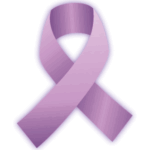
Amenorrhea: When someone stops getting their a menstrual period (or never gets their period even though they should). Amenorrhea is a sign that someone’s weight may be too low or that the hormones in the body are not working right.
Anorexia nervosa: An eating disorder in which people drastically limit their food intake, have an intense fear of gaining weight, and have weight loss that is not appropriate for their development and physical health..
Avoidant Restrictive Food Intake Disorder (ARFID): An eating disorder which is marked by low weight status for prior growth, nutritional deficiency, and/or interference with social functioning without fear of weight gain or body image concerns.
Binge eating disorder (BED): An eating disorder characterized by eating an unusually large amount of food in a short period of time and feeling a loss of control during these episodes. They do not purge afterwards, but often feel a lot of shame or guilt about their binge eating.
BMI (Body Mass Index) : A number that is calculated based on someone’s weight and height. This number is to help determine whether or not someone is below, in, or above a healthy weight range for their age based on their growth chart.
Bone density: A measure of how strong your bones are.
Bulimia nervosa: Cycles of binge eating followed by a purging episode. People with bulimia will eat an unusually large amount of food in a short period of time and then compensate after in an attempt to avoid gaining weight. They may compensate by exercising excessively and/or purging by self-induced vomiting or use of laxatives, enemas, or diuretics.
CBT (cognitive behavioral therapy): A type of therapy that teaches you how to be alert to the thoughts you have as you do certain behaviors. CBT targets thoughts and behaviors that are unhealthy or unhelpful. The focus of CBT is to decrease negative thoughts or unhealthy behaviors.
Challenge foods: Foods that people with eating disorders try to avoid because they may be considered unhealthy or because eating them may lead to binging or purging/vomiting. They may also be called “trigger” or “risk” foods.
DBT (dialectical behavioral therapy): A type of therapy that encourages patients to embrace the thoughts and feelings they have but to think in ways that prevent harmful behaviors. It’s primarily a group-based therapy with individual therapy back-up. Patients keep logs of their thoughts and feelings, and during treatment, they learn and discuss coping strategies.
DXA (Dual-energy X-ray Absorptiometry) scan: A test that measures bone density and strength of bone.
ED behaviors: Habits that people develop when they have an eating disorder. Behaviors may include vomiting after meals, cutting food into very small pieces, counting calories, exercising obsessively, overeating, skipping meals or eating very small meals, etc.
EKG (electrocardiogram): A test that looks at the activity and rhythm of the heart.
Electrolytes: nutrients that keep the heart and body working properly. These include sodium, potassium, and chloride.
Exchanges: Servings of foods from different food groups. Some meal plans are based on the exchange system, meaning they are divided into main groups (protein, fat, starch/grain, beverage, dairy, fruit, and vegetable).
Family-based treatment (FBT): A type of therapy that empowers parents to learn ways to get their child to eat. The therapist meets with the whole family to support the parents in feeding their child and the child in their efforts to recover. The goal of family-based treatment is weight restoration. This type of therapy is sometimes referred to as the “Maudsley” approach.
Family therapy: A type of therapy that involves the patient and their family members meeting with a therapist together. It can be a helpful place to discuss family issues and tensions while a therapist or counselor is there to find a solution.
Group therapy: A type of therapy where peers share experiences and stories with each other, and is usually led by a therapist or counselor.
Meal plan: An eating plan that is designed by a registered dietitian. A meal plan gives recommendations about the amount and types of food a person should eat to achieve or maintain a healthy weight.
OSFED (Other specified feeding or eating disorder): A combination of symptoms of eating disorders such as an intense fear of weight gain and a preoccupation with food (thinking about food or having food related thoughts most of the day) that does not meet the clinical diagnosis for anorexia nervosa, bulimia nervosa, or binge eating disorder.
Purging: Any behavior that someone with an eating disorder uses to “get rid of” calories. Purging behaviors include vomiting, taking laxatives, diet pills, or excessive/compulsive exercise.
Safe foods: Foods that people with eating disorders can eat comfortably. Safe foods are often unprocessed, low-fat, or low-calorie foods, but can be different for every person.
Trigger: Anything that makes someone want to engage in certain behaviors or have eating disordered thoughts.
Vital signs: Measurements which include body temperature, blood pressure, and pulse.
Weight goal range: A range of weight that a treatment team decides is a healthy weight for a person’s recovery. It takes into account what a person weighed before the eating disorder, their gender, age, and physical activity level A person’s weight range will increase as they grow and get older.
Our health guides are developed through a systematic, rigorous process to ensure accuracy, reliability, and trustworthiness. Written and reviewed by experienced healthcare clinicians from Boston Children's Hospital, a Harvard Medical School teaching hospital and consistently ranked as a top hospital by Newsweek and U.S. News & World Report, these guides combine clinical expertise, specialized knowledge, and evidence-based medicine. We also incorporate research and best practices from authoritative sources such as the CDC, NIH, PubMed, top medical journals, and UpToDate.com. Clinical specialists and subject matter experts review and edit each guide, reinforcing our commitment to high-quality, factual, scientifically accurate health information for young people.

